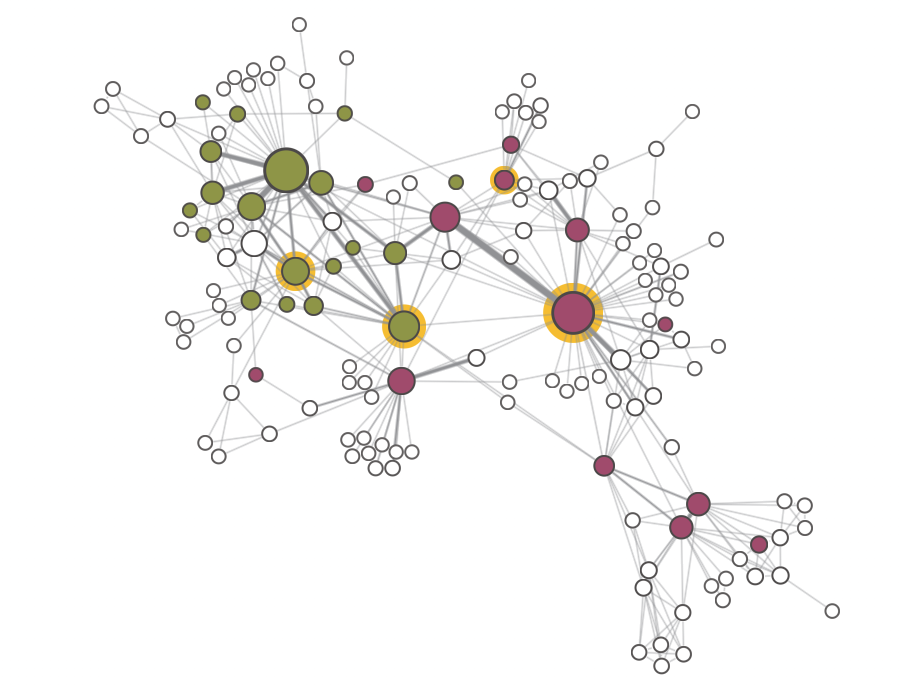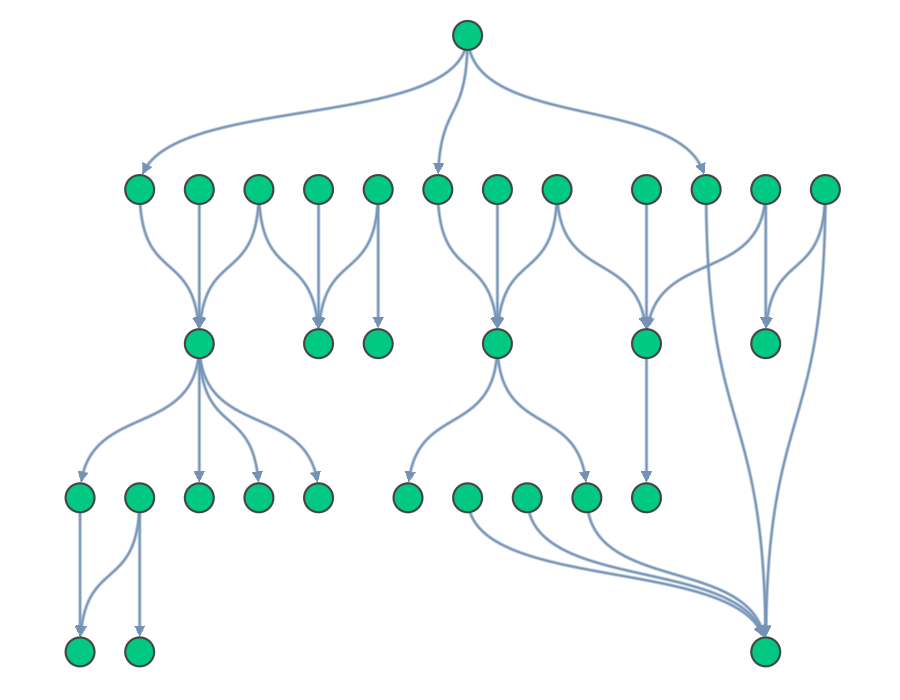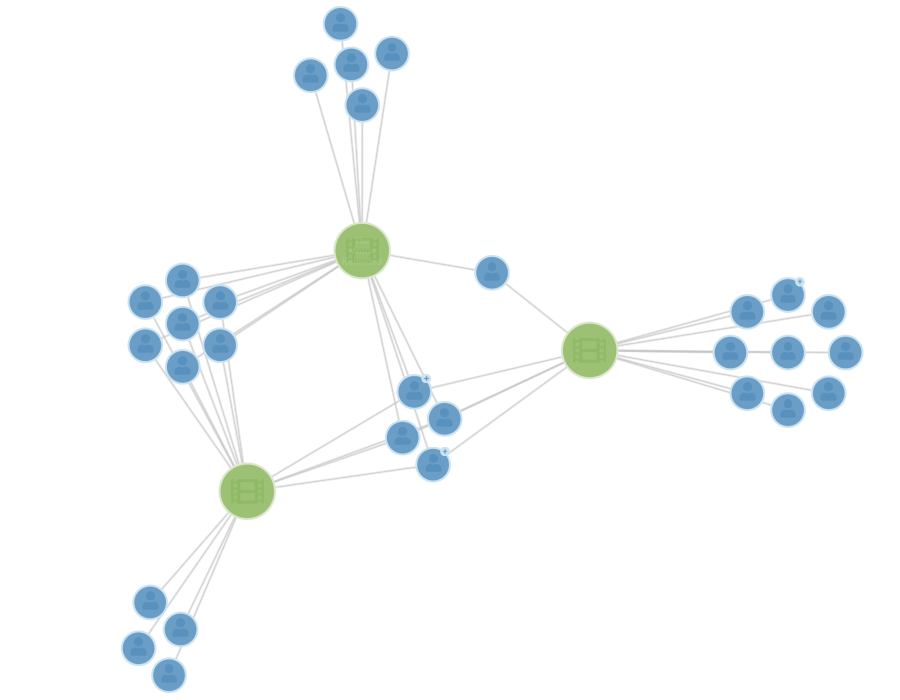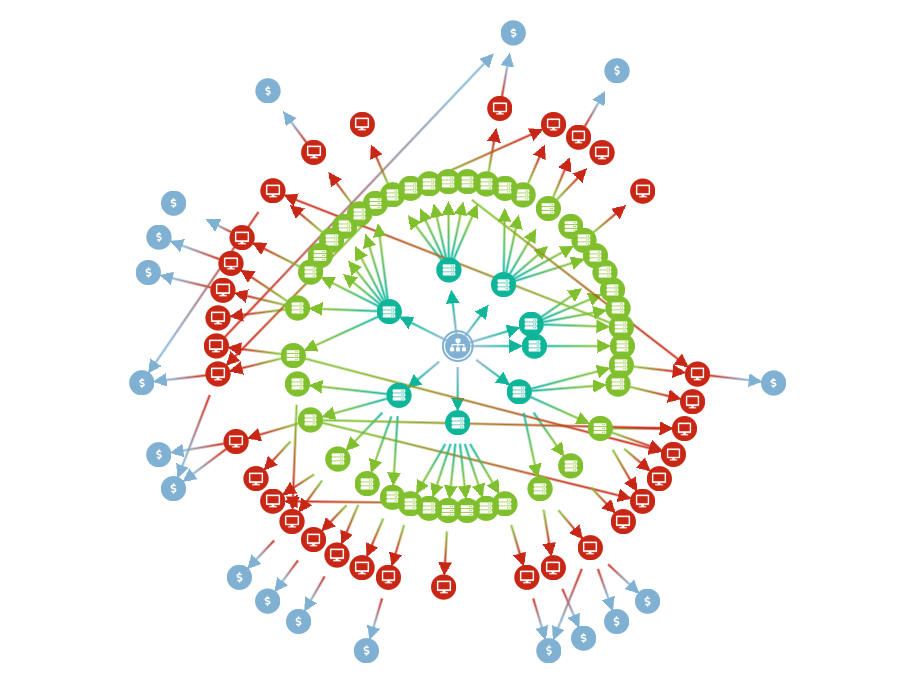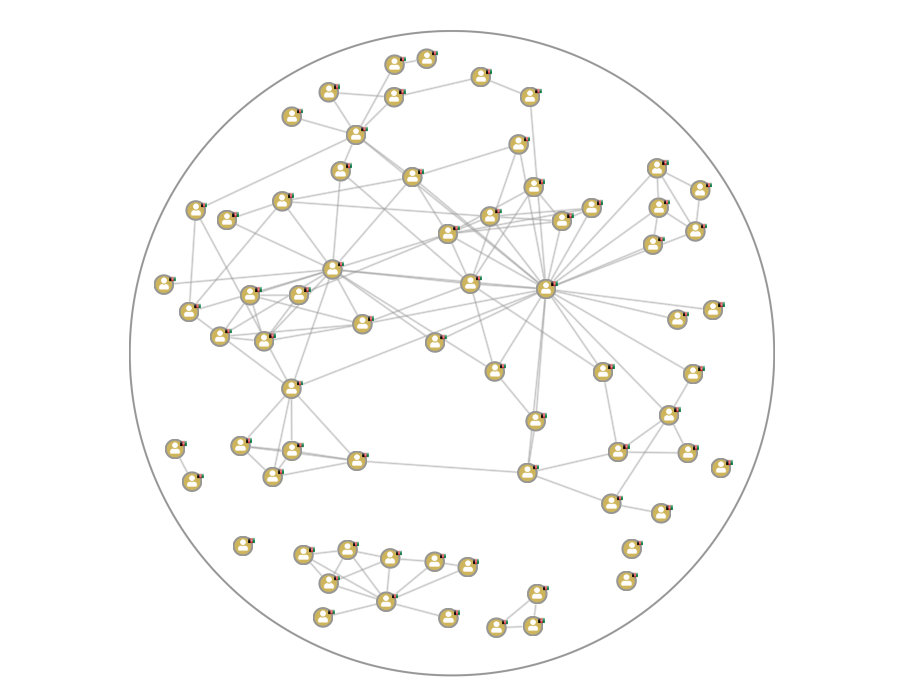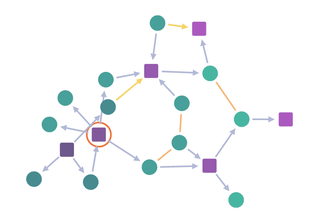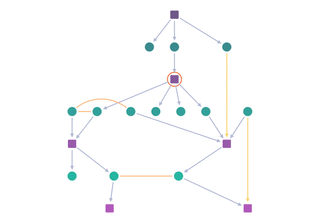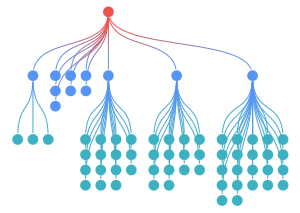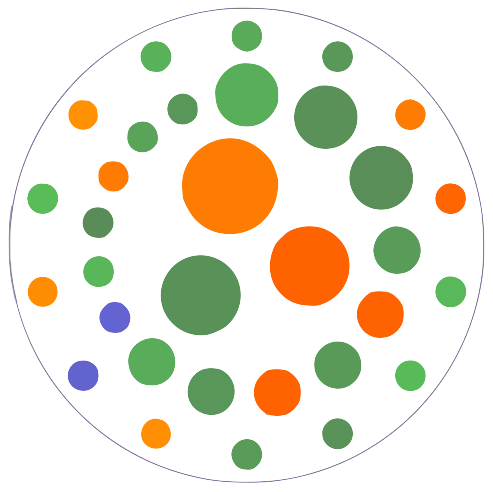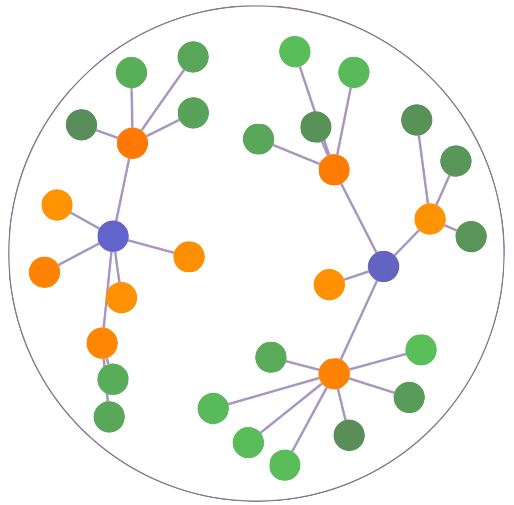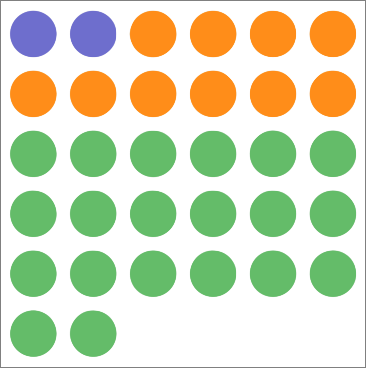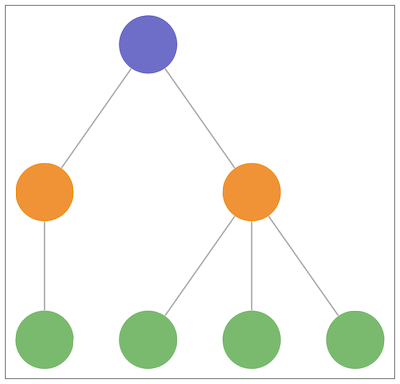The organic layout is our default layout that is used when you don't specify a layout while running chart.layout() or chart.expand().
Organic is a force-directed layout, which means that the layout places connected nodes closer together and organises them in a way that reduces link crossings in the chart as much as possible. It is clear, reliable and makes a good all-rounder for any type or size of data as it focuses on finding patterns and symmetries.
In addition, organic is especially useful for untangling complex networks as it spreads nodes and links apart.
Organic can be run as a short layout in adaptive mode which adjusts the current item positions to respond to layout changes while minimising the overall amount of movement.
See examples of organic in action in our Mafia Network demo.


